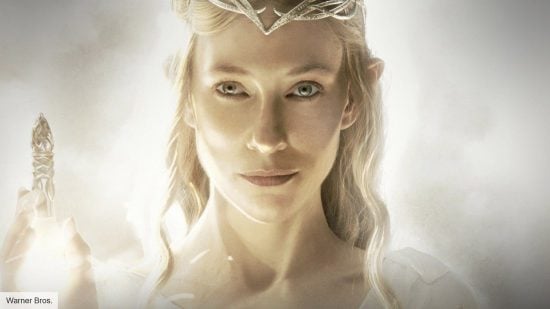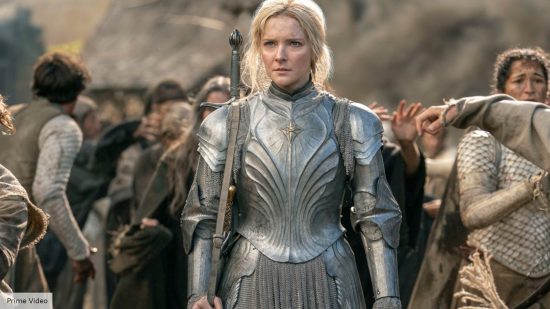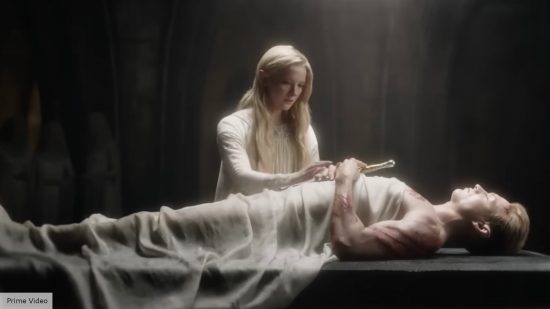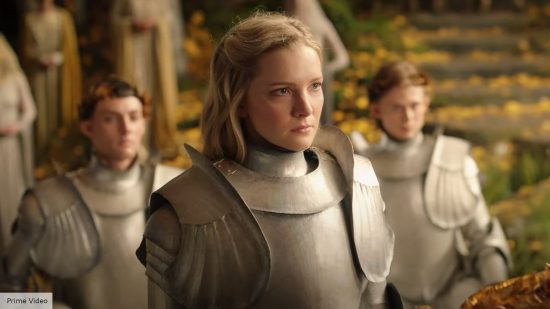The Rings of Power has been a delight for many a fantasy fan, bringing the work of JRR Tolkien to our small screens,once again transporting us to the realm of Middle-earth. Set thousands of years before the events of Peter Jackson’s Lord of The Rings movies, in the Second Age, we witness the events that led to Sauron creating the ‘One Ring’, and learn the backstories of some of the best Lord of the Rings characters – one being the Lady of Light herself, Galadriel.
Galadriel has long been a fan favourite when it comes to Tolkien’s world. From her role in all of Tolkien’s writing to Cate Blanchett’s portrayal in Jackson’s fantasy movies, she has always been captivating. However, in Amazon’s fantasy series, The Rings of Power, the elf is now fully front and centre and in the thick of it all. Morfydd Clark plays a younger version of the character, one who is a fighter and an active warrior – a side to Galadriel we haven’t seen before.
Many fans are all aboard Clark’s take on the character, posting tons of love on social media. But, unfortunately, not every Tolkien fan agrees with the recent surge of the Lady of Lórien love, with some taking to Twitter to spam pictures of Cate Blanchett with the hashtag ‘the real Galadriel’ – as if Clark and Blanchett’s performances can’t co-exist.
As mentioned above, Blanchett played Galadriel in the Lord of the Rings movies, set in The Third Age, 3,000 years after Clark’s iteration of the character in the Tolkien timeline. And for some reason, a certain section of the fandom is adamant that since Clark isn’t a carbon copy of this older and wiser Galadriel, her version of a younger elf isn’t valid.
Now, every fandom is protective of its nostalgia, and it is understandable why some may vehemently deny the changes to the cinematic Middle-earth canon, such as the re-casting of their fav elves. But, in actual fact, The Rings of Power, love it or hate it, is a TV series that adheres to the simple principles of good character writing, and Clark’s Galadriel adds a fascinating chapter to the elf’s emotional and intellectual progression that ends with Blanchett’s take on the powerhouse. Basically, this means that there is no one or the other; both Blanchett and Clark, when put together, make one character.

Galadriel, like every other great literary character, requires growth, and just because she is immortal, that doesn’t mean that she should be eternally set in stone, having the same demeanour and personality as Blanchett thousands of years later. I mean, come on, she is an Elf, an incredibly powerful one, but not a god. Humans and, in fantasy series, elves are continuously evolving, learning from experiences and changing over the passage of time. Good characters are complex, layered, and their actions are dictated by their histories.
How many people can say that they are exactly the same person they were ten or twenty years ago? So, now imagine if you are Galadriel, who has been around for (checks notes) roughly five thousand years, and will go through another three thousand as well as another war before we meet her again in the Third Age after the events of The Rings of Power.
In a press conference attended by The Digital Fix, Clark touched on this point about character progression, saying that Galadriel in the Second Age is driven by arrogance, lacking the wisdom from her 8,000-year-old future self, as seen in the Lord of the Rings movies. She is a woman who is driven by her desires and is still learning, fighting her impulses, and growing as an individual.
“I think the wisdom and serenity of Galadriel in the Third Age is harder and comes from getting things wrong. And I kind of was exploring that idea a lot because I’m playing a younger Galadriel, but not a young Galadriel,” Clark explained. “And this idea of kind of what could naivety and youth look like on someone who’s already thousands of years old. And what I kind of struck on was arrogance. She doesn’t know the limits of her knowledge. And so that’s what I was kind of exploring and the mistakes that can come from that.”
Now let’s talk about the Olifant in the room, The Silmarillion. Many may be upset about the vast changes in Galadriel’s character from that specific work. In Tolkien’s writing, Galadriel was born in The Years of the Trees 1362 in Valinor. In the First Age, she met and married her husband, Celeborn. Although she didn’t play a massive role in the war against Morgoth, she felt the aftermath as her brothers were killed in the Dagor Bragollach – The Battle of Sudden Flame – in the year 455 FA. Then another one of her brothers, Finrod, was captured and perished by the hands of none other than the big baddie of The Lord of the Rings, Sauron, in 465 FA.

While in the Second Age, she isn’t said to be heavily on the battlefield as The Rings of Power’s depiction of her would suggest, she is still feared by Sauron, and is a respected and powerful figure. This also ties into how absurd some complaints are about the canon, and of Amazon’s version of the character.
The same people annoyed that Clark’s character isn’t a strictly faithful adaptation of The Silmarillion are also among those who have complained about how in episode 1 of The Rings of Power, we saw the elf take down an Ice Troll too easily – as if we all forgot how acceptable it was for Legolas to shoot a massive Oliphant in the head and take it down with a single shot in Peter Jackson’s adventure movies.
People also seem to forget that Tolkien himself stated that Galadriel was abnormally tall and strong and (I cannot overstate this enough) how her presence was even noticed and worried about by Sauron himself. Now you could say that the ‘real Galadriel’ conflict may relate more to The Rings of Power breaking canon. In the Amazon series, Celeborn is nowhere to be seen, nor is Galadriel’s daughter and Elrond’s future wife, Celebrian.
And to that, I would remind fellow fans that in the Second Age, Galadriel and Celeborn were separated for a time, and that their daughter Celebrian was only born in the year 300 SA. Yes, The Rings of Power have taken liberties with the Tolkien timeline, condensing 3000 years into a TV series. But no completely lore-breaking choices have been made yet, so I would say, keep your fingers crossed and hopefully, we will see Celeborn in season 2.
The Rings of Power creators are familiar with Tolkien’s work, worked with the Tolkien estate on the show, and are fans of the franchise themselves, so for now, let’s give them the benefit of the doubt when it comes to upkeeping the sacred canon. Now with that out the way, let’s be frank, these Galadriel criticisms aren’t purely fuelled by adaptation concerns, they also come from a place of rejecting Galadriel’s character growth, and her new aggressive battled, ready demeanour.
At the end of the day, when it comes to female characters, there still seems to be a double standard within every fandom; archetypes of femininity are enforced, and when they are broken, certain people vehemently deny it. And unfortunately, Tolkien isn’t excluded despite the author himself writing that Galadriel did have ‘masculine’ qualities from the get-go, with her mother even naming her Nerwen – which literally means ‘Man-maiden’.
Galadriel may not be the married lady we all know from the novels, but still, she holds the same essence of power, anger, and her younger self, played by Clark, has undergone far too much far-reaching scrutiny. So, in short, there is no ‘real Galadriel’ when it comes to the cinematic versions of Tolkien’s work; there is one.
Yes, we may see her during two separate and very different stages of her immortal life, but in essence, be it, Clark or Blanchett, she is the same character that Tolkien envisioned.
You can now watch The Rings of Power on Amazon’s streaming service Prime Video. To sign up for a Prime membership, click our link here.



